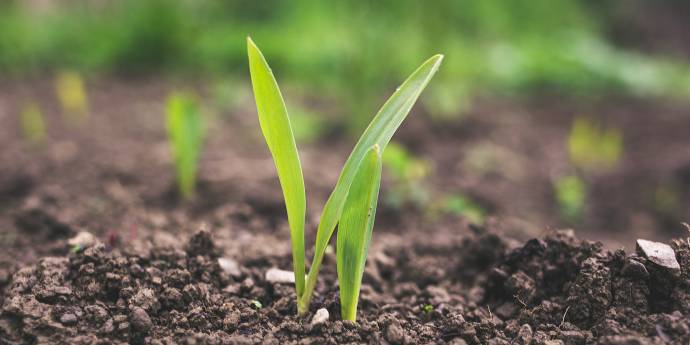Truthfulness in company operations: ASIC insights
Australian Securities and Investment Commission active against investments misrepresenting ESG attributes.
A summary of the Overview of Impact Investing in Aotearoa report released November 2020 by the Centre for Social Impact.

Impact investing refers to investments made into companies, organisations and funds with the intention to generate positive social or environmental impacts alongside financial returns [1]. Impact-first investment seeks to optimise social or environmental impact, while also obtaining financial returns whereas finance- first investment seeks to optimise financial returns, while obtaining social or environmental impact [2].
The practices and motivations of investment and philanthropy have traditionally been divided. These worlds are now converging, creating an investment continuum. This continuum links traditional investing equity with traditional philanthropy (grants) through sustainable and responsible investment, impact investment and venture philanthropy. These approaches differ in the degree to which they integrate societal and financial considerations.
The practice of impact investing has three core characteristics:
The Global Impact Investing Network (GIIN) recently conducted an impact investment survey which estimated the market size for impact investing (as of April 2020) was US$175 billion. It found that while the majority of the market consists of small investors, the median investor manages US$89 million and there are a small number of investors that manage significantly larger funds.
While the total amount invested in impact funds is still relatively low, the International Finance Corporation estimated in its report Creating Impact: The Promise of Impact Investing that the appetite for impact investing may actually be as high as US$26 trillion. With increasing mainstream demand there is likely to be an acceleration of new ESG and impact investment opportunities in 2021 and beyond.
Also, the appeal of impact investing is not limited to developed countries. Respondents to GIIN’s survey came from 46 countries. While 77% of these investors had their headquarters in developed markets, 21% of headquarters were located in emerging markets and these markets are growing rapidly, especially in food production, other agriculture and healthcare.
The appetite for impacting investing in New Zealand is also on the rise as investors here look beyond the low returns from traditional investments and seek returns from their investments beyond financial ones.
There are already a number of impact funds active in the New Zealand market. These include:
The Impact Investing Network Aotearoa is an example of a community developing in this area which connects people through discussion about impact investing to share, educate, raise awareness and inspire [4].
Recently, we have seen a trend in New Zealand of individual investors taking a more active interest in where their Kiwisaver funds allocate their investments. As a result we are seeing greater transparency of Kiwisaver portfolios as well as providers developing more ESG and impact-focused funds.
In a recent article for Stuff, I suggested the Government could partially guarantee certain qualifying investment categories that provided both financial return and positive social or environmental impacts. It could also invest a small percentage in impact projects to give a greater level of comfort for others to also participate.
One aspect that makes Aotearoa unique in the impact investing space is the rich perspective of Te Ao Māori. The Connective, an impact-first company that collaborates with investors, funders and local and indigenous communities to design systemic investment programmes and projects, has recently released four guides. The guides are designed to share some of the learnings from the collaboration Te Pai Roa Tika O Te Taitokerau, a Tikanga-led impact investment platform.
As governors we may be asked to more actively consider the investments our organisations are making and to defend those investment decisions. This will mean collaborating more with stakeholders and shareholders and developing partnerships to advance the agenda on critical issues affecting New Zealand society and global issues such as climate change.
Foundation North is one of 12 Community Trusts in New Zealand. It has an impact investment asset allocation in its portfolio and a focus on undertaking impact investment to support their mission across three focus areas of their strategy:
Impact investment is another tool alongside grants to support communities. The foundation has invested $2m into The Salvation Army Community Bond, managed by Community Finance. This provides finance to The Salvation Army, an existing grantee of the Foundation, to build three social housing developments in Royal Oak, Westgate and Flatbush and will support 120 families into safe, warm and secure housing. It’s not a grant, it’s an investment. Foundation North says it works with communities to create and build deals that work for them, and ensure that finance is shaped to respond to shared objectives not just the investors’ objectives. Impact investment is not just about the capital: it is about relationships, collaboration, patience. They say we need to think – and act – long term. |
|
Read the full Overview of Impact Investing in Aotearoa report on the Centre for Social Impact website. References[1] Global Impact Investing Network [2] Growing Impact in New Zealand Impact Investment: need, practice and opportunity (2017) [3] Impact Investment Part One: An introduction to impact investing (2017) by the Centre for Social Impact and the Ākina Foundation |
Steven Moe MInstD is a partner at Parry Field Lawyers and works in corporate law providing advice to companies, not-for-profits and social enterprises. Steven is a facilitator on the IoD's Company Directors' Course and chair of Community Finance.